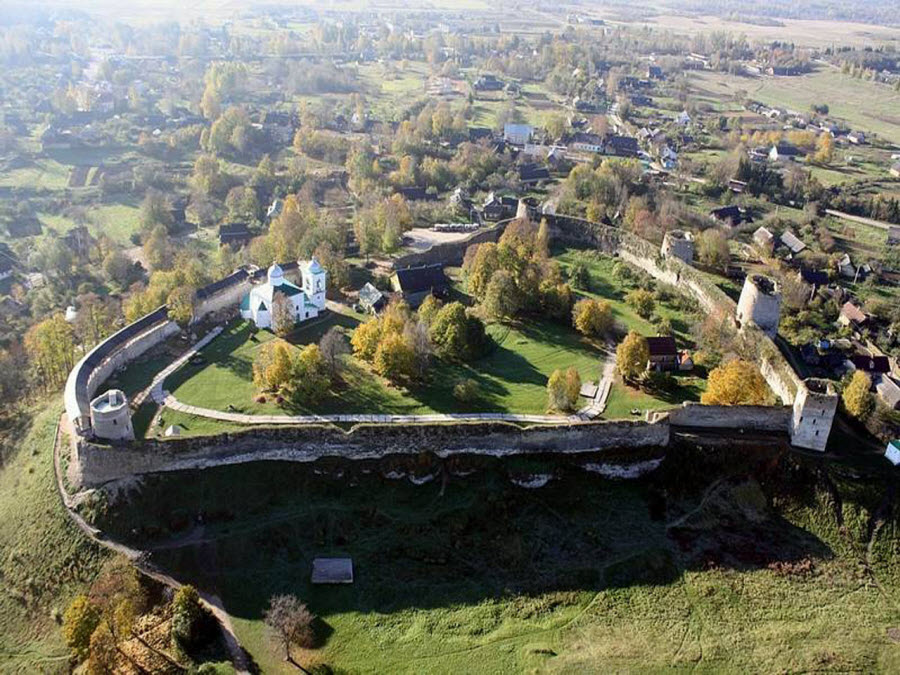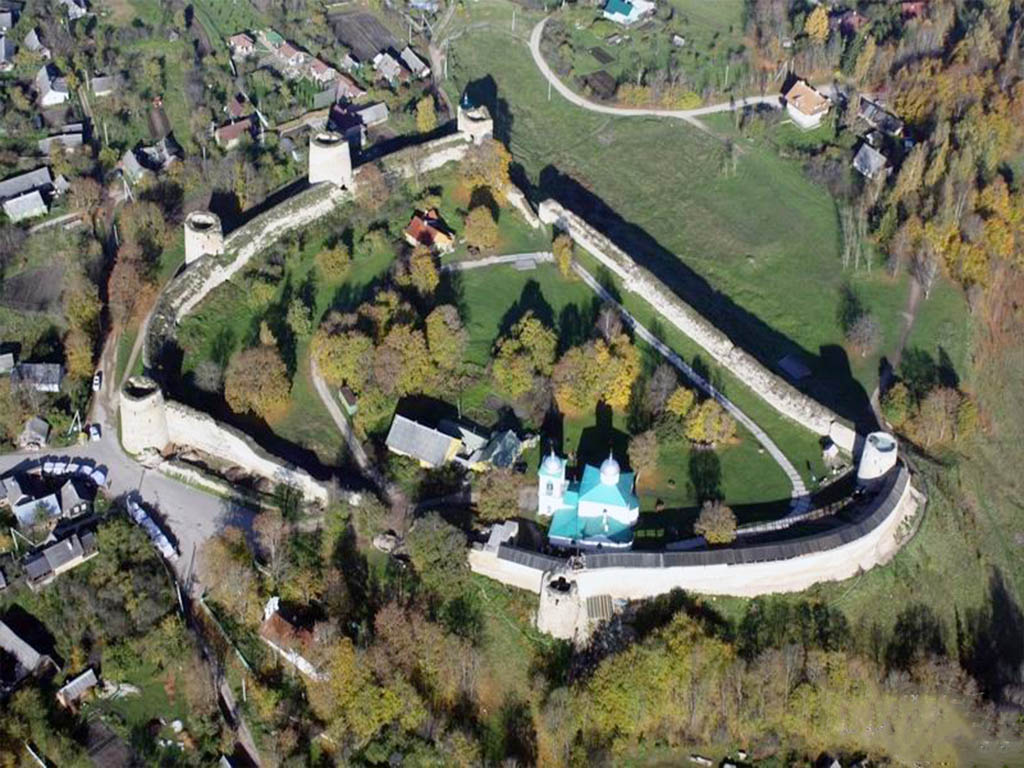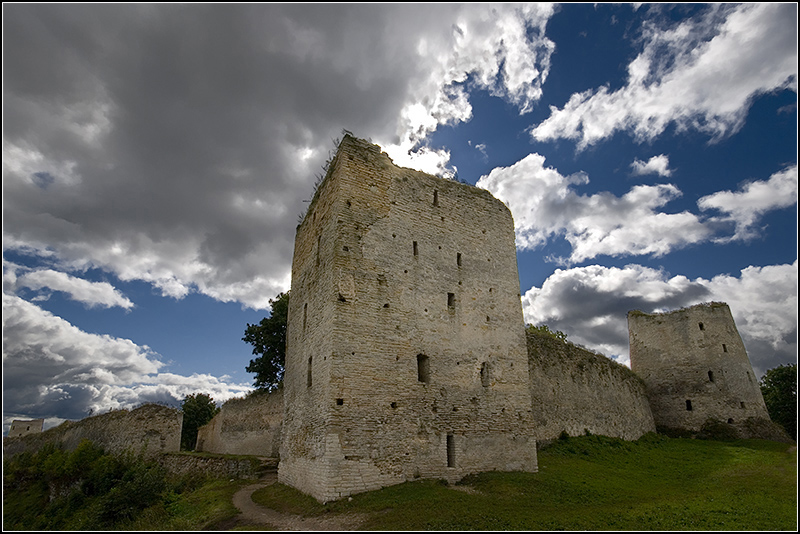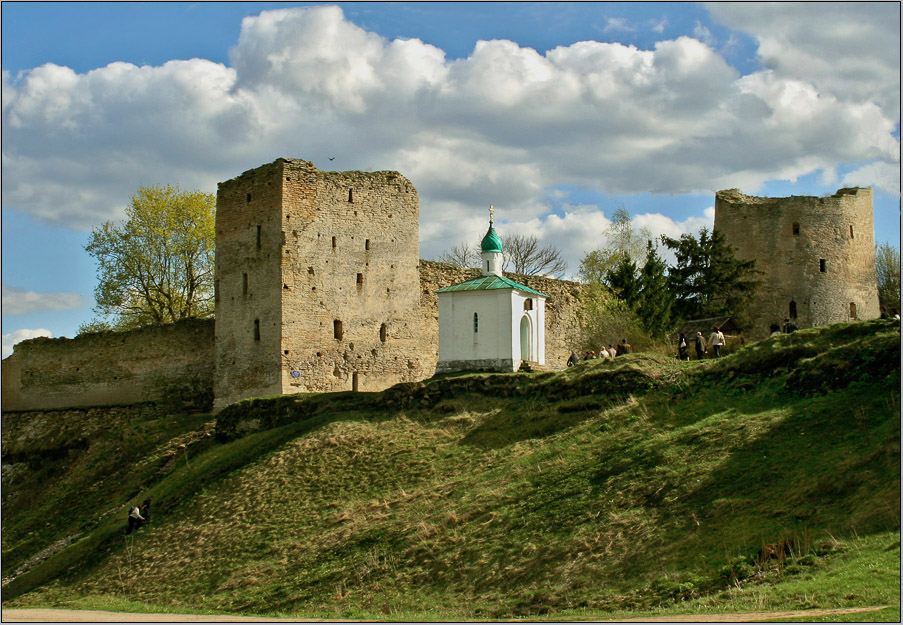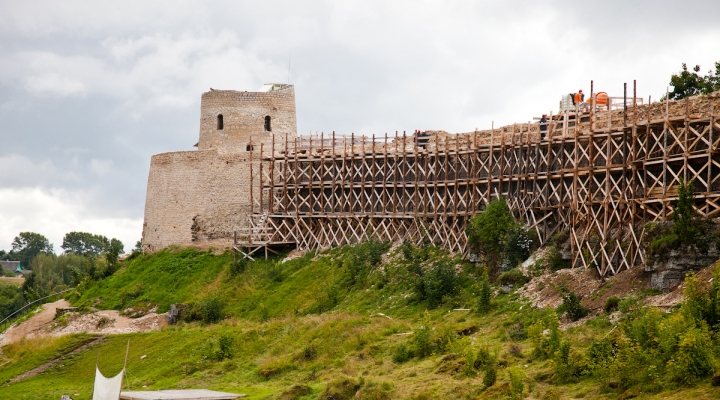Izborsk is a rural locality (village) in Pechorsky District of Pskov Oblast, Russia. It contains one of the most ancient and impressive fortresses of Western Russia. The village lies 30 kilometers (19 mi) to the west of Pskov and just to the east of the Russian-Estonian border.
According to the Russian Primary Chronicle, the town was the seat of Rurik's brother Truvor from 862-864. Although his burial mound is still shown to occasional tourists, archaeological excavations of long barrows abounding in the vicinity did not reveal the presence of the Varangian settlement at the site, indicating that Izborsk was an important centre of the early Krivichs.
The next mention of the town in Slavonic chronicles dates back to 1233, when the place was captured by the Livonian Brothers of the Sword. Pskov moved the fortress to a more convenient site in 1302. The most ancient extant structure is the Tower Lukovka (literally, "Onion Tower"), constructed in 1330. At that time it was the only stone building west of Pskov and adjoined a wooden wall. After seven other stone towers and the new stone wall were completed, Lukovka became a watch-tower. The Nativity church within the fortress was built in the 16th century. Near the fortress is a museum of stone crosses.
In the later 1500s Izborsk was one of the smaller, but nonetheless strategically important fortresses that protected the northwest Russian borders from invasion. The fortress was supposed to be impregnable, which is why the seizure of it in 1569 by a small Lithuanian regiment came as such a shock to the then ruler, Ivan the Terrible. The relative ease and suspicious circumstances of the seizure of the fortress deeply troubled the already paranoid Ivan. In the dead of night Teterin, a Russian turncoat disguised as an oprichnik, ordered the gates of the town be opened in the name of the oprichnina, thus allowing the enemy regiment to enter and overtake the fortress.
Though Ivan managed to retake the city with little difficulty, the treachery and conspiracy involved in the original seizure led him to order the executions of the assistant crown secretaries of Izborsk, as well as the secretaries of the surrounding fortresses. With rumors of disaffection and growing discontent throughout the country on the rise, Ivan feared that other cities would soon follow the treasonous example of Izborsk. The proximity of the town to the cities of Novgorod and Pskov, coupled with the questionable implication of Novgorod's chancery administration in Teterin's plot, threw suspicion of treachery and defection onto the already distrusted city.
According to the Treaty of Tartu, the Russian-Estonian state boundary went eastwards of Izborsk and thus the town was part of Estonia from 1920 to early 1945 when, both Russia and Estonia being part of Soviet Union, the Russian SFSR/Estonian SSR boundary was moved westwards and thus Izborsk became part of the Russian SFSR.




